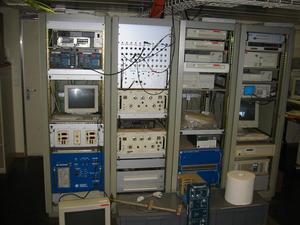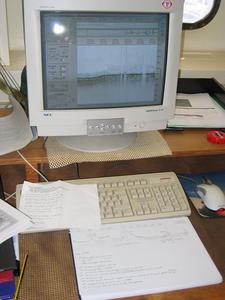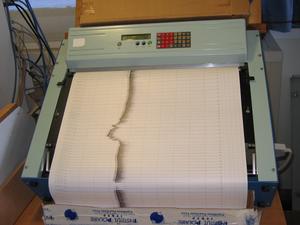
Onboard electronics controlling the echo sounder.

Sounder display.

Paper output.
 Onboard electronics controlling the echo sounder. |
 Sounder display. |
 Paper output. |
3.5 kHz echo sounding is routinely used for monitoring the seafloor and the upper few hundred meters of the sediment cover. It is therefore a crucial tool for detecting potential coring sites during site surveying. The 3.5 kHz echo sounder record reflects the geometry and thickness of the of the upper few hundred meters of sediment, but also provides some information about the sedimentation rate and the composition of the sediment. However, the geological interpretation of echo sounding records is still speculative to a large degree.